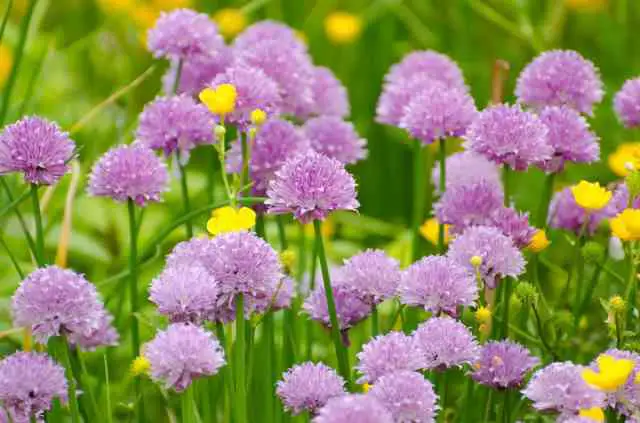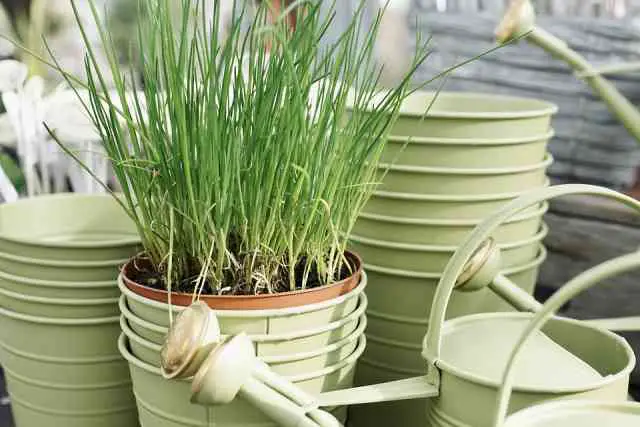Chives are beautiful herbs, grown for their mild, onion-tasting leaves and bright flowers. Chives are vigorous growers if given the optimal conditions to thrive. Near the end of the growing season, while the ground is still warm, they tend to grow into a thick, tight clump and need to be trimmed back and thinned to control their spread and maintain the plant’s health. If you leave them growing in the dense clump, the plants will become weak and spindly. Before you know it, the plants at the center of the cluster will start dying out.
Chives need ample air circulation between the shoots. In addition, there should be some spacing between shoots to allow better access to sunlight and lower competition for water and nutrients.
Reader Poll: What online courses would interest you?
All these reasons bring you closer to the answer “Can you split chives?” You can, in fact, you should, split chives to maintain the healthy growth of the plants. Continue reading and you’ll learn all about splitting chives.

When To Split Chives?
Most herbs are best divided in spring. Chives aren’t one of them. They’re best split near the end of summer while the soil is still warm. When divided in late summers the rejuvenated chive plants give a fresh flush of leaves, sweeter in taste thanks to the cool temperatures of the fall that follow summers. In addition, if you split them in late summers or early fall, you may even find the plants multiply a bit before the cold weather sets in and the plants go dormant in winters.
Set Up The New Home For Divisions
Before splitting a chives patch, you should know that you’ll get a bunch of new chives plants. Unless you want to toss them in your salad bowl, you need to set up a container or a planting bed to plant these and start a new chives patch for free!
Subscribe to our newsletter!
Chives need well-drained, fertile soil at a location with at least 6 hours of full sunlight. Fill a container with light potting soil, or prepare a garden bed by amending it with compost. Make sure there’s ample sunlight where you plan on growing your new chives patch.
How To Split Chives
Now that the new home is ready for the divided chives, we are ready to split chives! Follow the steps to split chives into several clumps for replanting:
- Water the crop a few hours before you start the project for splitting chives.
- Snip the green tops until about 4 inches of growth remains from the soil level.
- Use a shovel to lift up the entire chives plant from the ground, being careful to get all the roots.
- Shake off the excess dirt and place the uprooted plant on the ground.
- Use a shovel or a trowel to divide the plant into sections. You may also need to use your hands to pull out the roots, being careful to cause as little damage as possible. However, if some roots break and fall off, that’s not much of a problem either as chives will regrow new roots quickly once you plant them in soil.
- Now you have a bunch of plants lying before you on the ground. Divide them into clumps of 4 to 5 bulblets to replant.
Replanting New Chives Plants

Now that you’ve split your existing chives plantation, you have several groups of new plants to grow! Replant them immediately before the roots start weakening and dying out. You may want to plant some at a fresh spot in the planting bed and the rest in small pots that can go on your kitchen windowsill for convenient snipping whenever your dinner preparation demands some fresh herbs.
Take each clump to its new home and plant it ½ inches deeper than it was when growing at the original spot. Place the new plants into the planting holes and cover the roots with soil. Tamp them down gently to hold the plant firmly to the ground. Water well after transplanting.
Splitting and transplanting the new plants in late summers or early winters gives the new transplants some time to develop a strong root system and put on some green growth before they die back in winters. Chives are herbaceous perennials so even if they die back for the winters, don’t lose hope. In fact, this is a natural phenomena. If all goes well, chives will re-sprout in spring for a fresh, new season.
Fertilizing To Renew Plant Vigor
Fertilize the planting site for the new plants with a light application of a slow-release plant food. After the initial application to help root establishment, don’t add any more fertilizer until the start of new growth in spring. Fertilizing during the winters can trigger the plants into putting on new growth at the wrong time of the year. Any new growth during winters will succumb to the harsh weather and leave the plant prone to diseases.
Caring For Chives Plants
The newly planted chives transplants need some additional care to thrive. Make sure you plant them somewhere they are not overshadowed by tall plants or trees. If growing them in pots indoors, place them next to a sunny, preferably south-facing window or under grow lights that are kept on continuously for 12 hours each day.
Mist the soil every day to maintain consistent moisture. Make sure you offer water at room temperature since cold water can slow down growth.
Additionally, snip the blooms before they dry out to prevent the plants from wasting their energy in producing seeds. Fresh blooms can also be added to salads and herb vinegar.
Conclusion
So now that you have all the insight on splitting chives, keep your chives crop growing to its utmost potential while extracting fresh, new plants consistently to grow elsewhere in your garden.

